From LEED to LID: A green-building primer
December 31, 2009
 New Year’s resolutions tend to fade by February, but Los Angeles County’s resolve to green-up home and commercial construction has the permanence and force of law.
New Year’s resolutions tend to fade by February, but Los Angeles County’s resolve to green-up home and commercial construction has the permanence and force of law.
On January 1, major elements of the green-building ordinance approved by the Board of Supervisors in 2008 go into effect, requiring new construction in unincorporated areas to be more sustainable and less polluting. Together with mandates that went into effect in 2009, the county’s new rules are among the nation’s most comprehensive, affecting projects from single-family homes to office high-rises.
The rules are complex and filled with language best understood by builders and planners. But the rest of us need not sit in the dark. So here’s a quick primer to shed a little (energy efficient) light on the subject:
• Upcoming projects will increase energy efficiency, cut greenhouse gas emissions, utilize sustainable construction materials and cut water use.
• Requirements govern both buildings and landscaping, but vary according to the size and type of the project.
• The ordinance requires builders to use LID, or Low-Impact Development, practices to save and recycle rainfall. Rather than shunting run-off to storm drains, the rules that went into effect in 2009 mandate the use of materials such as porous pavements. These let rainwater seep into the water table, thus increasing the drinking water supply while keeping dirty run-off away from our beaches.
• All commercial development must follow LEED, or Leadership in Energy and Environmental Design, building standards. Developed by the U.S. Green Building Council, LEED rules force builders to use efficient building methods and materials to reduce energy use, greenhouse gases and other pollution. Under the new restrictions, the bigger the project, the tougher the LEED standards. Small projects need only meet basic LEED benchmarks. Projects over 25,000 square feet have to follow LEED Silver standards. Residential projects with more than four units can choose between following LEED or two other stringent sets of standards.
• To slow the flow of construction debris to county landfills, builders must reuse or recycle at least half of the waste materials.
• Unlike other green building codes, L.A. County’s ordinance applies to single-family homes. For example, new homes must be 15 percent more energy-efficient than required by the prevailing state standards. Outdoors, the new codes limit the use of grass to 25 percent of a lot’s area and require the use of drought tolerant plants and low-flow irrigation.
High-profile projects that, if approved, are expected to seek building permits under the new rules include expansions at Pepperdine University and Universal City as well as a large residential development at Tejon Ranch.
A green holiday postscript
December 30, 2009
The Department of Public Works has posted a handy guide to Christmas tree recycling in communities across Los Angeles County. Strip off the lights, ornaments and tinsel and put that bad boy curbside on the day specified for your area.
The glitter days may be over, but the trees have one last role to play: most will be chipped up and turned into “alternative daily cover” in landfills, while the others will be transformed into mulch or compost. Last year, more than 350,000 Christmas trees were picked up as part of the recycling program run by the county’s sanitation districts. As for dealing with the rest of the seasonal excess—metallic wrapping paper, we’re talking to you now—check out the public works department’s tips for leaving a greener holiday footprint next year.
Unlikely duo writes new script for inmates
December 28, 2009
As a Hollywood executive, Scott Budnick produces buddy movies with a twist, like “The Hangover,” this summer’s gross-out comedy about the aftermath of a lunatic Vegas bachelor party, which has been nominated for a Golden Globe.
But he’s also starring, albeit far more quietly, in a real-life buddy production.
The high-energy film executive teamed up with a young prison inmate to create a new state program that gives an educational boost to L.A. County juvenile inmates who, at age 18, are facing time in California’s tough adult prisons. Launched last year, the Youthful Offender Pilot Program so far has placed about 50 juvenile offenders in safer settings with better educational and job training programs.
“I love a challenge,” says Budnick, 32. “This is a population that no one really cares about. These guys are demonized, and some people think they can’t be rehabilitated. It’s not true.”
A good number of these young inmates—eight of them—are at the medium security California Rehabilitation Center in Norco, near Riverside, living in a “college dorm” decorated with murals of Albert Einstein and astronaut Neil Armstrong and featuring quiet study rooms.
There, these young charges of the penal system, along with nearly 100 older inmates, have been allowed to participate in an already existing, federally-funded college program for inmates under the age of 35. They take correspondence courses ranging from art to pre-calculus and watch DVD lectures on four new flat screens.
From Budnick, they’ve learned lessons of another sort.
“He don’t have to do none of this for us,” says Michael Tavarez, 18, from La Puente, who arrived at Norco this spring after a conviction for assault with a deadly weapon. “He has his own life, but he’s doing all this just to help us out.”
The idea for the program actually started with an inmate named Prophet Walker, who was sentenced to six years for assault with great bodily harm. He had been one of Budnick’s students in a writing program at Juvenile Hall in Sylmar, where he earned a high school degree.
At 18, Walker was shipped to an adult facility in Blythe, a rough setting for a young guy determined to right his life. Despite the environment, Walker continued to pursue his education and steered clear of the gangs that ruled the roost. After two years of lobbying prison officials, he won a bed in the lower-security Norco and a seat in its coveted educational program.
Given his own experiences, Walker figured there must be some way for other juveniles who’d done well during their incarceration to sidestep the more dangerous adult prisons, which he believed were undermining rehabilitation.
So, in 2008, he turned to Budnick for help. And the executive turned the challenge back on Walker, telling the inmate that, if he came up with a good plan, he’d sell it to prison higher-ups. In fact, Walker came up with a very good plan.
He proposed revamping the scoring system that state correctional officials use to place new inmates in prisons so that it rewarded juveniles who behaved well during their incarceration. Budnick jumped on the idea. A week later he arranged a meeting in Sacramento with Scott Kernan, who oversees inmate classifications for the California Department of Corrections and Rehabilitation as undersecretary for operations.
Kernan was quickly receptive. He shared concerns that younger inmates can get “thrown to the wolves” in tougher, high-security facilities, making rehabilitation even more remote. “We hope this will help avert some of those problems,” Kernan says.
If an inmate and an outsider teaming up for prison reform wasn’t enough of a Hollywood ending, Walker, now 22, earned parole in November after completing an associate’s degree behind Norco’s walls. In January, he’s scheduled to start classes at Loyola Marymount University as an undergraduate engineering student.
“It’s amazing,” Walker says of his accomplishments. “I’m still coming down from the high.”
As for Budnick, he says he’s driven to help the young inmates because most people see them as a “disposable population” best locked up and forgotten.
Budnick, who grew up in a nice Atlanta neighborhood and says he never got in trouble, believes that kids in tougher neighborhoods are afflicted by the same lack of awareness of consequences as teens in more affluent areas. The difference, he says, is that guns are more pervasive in some neighborhoods. “If you grow up like me in the suburbs, the kids get in a fight and it’s not a big deal,” he says. “Here, everyone’s armed, and it takes it to a different level.”
Budnick is president of Green Hat Films, the production company of director Todd Phillips. Besides “The Hangover,” Budnick also has producer credits for “Starsky and Hutch” and “School for Scoundrels.” He’s an executive producer of another upcoming Phillips buddy film, “Due Date” with Robert Downey Jr., which was shooting this fall.
One morning in November, Budnick played hooky from filming at the Ontario Airport to visit his friends at the college classroom at Norco, the sprawling prison that houses 4,680 inmates.
“Molina, you keeping up with your work?” he asks Luis Molina, 20, from Van Nuys. Molina arrived in March, after time at Folsom State Prison for attempted murder and robbery.
“Alfaro!” Budnick greets Anthony Alfaro, 23, from Santa Monica, who entered the program last year and says he is “halfway to an associate’s degree.” Convicted of attempted murder as a teen, he’s now planning on enrolling in college after parole in two years and hopes to get an MBA someday. “I’ve got a lot of ambition,” he says.
Like Walker, Alfaro entered the state prison under the old rules, and was assigned to Centinela State Prison in Imperial County. And, like Walker, he too had known Budnick from the InsideOUT Writers group as a juvenile inmate in L.A. and stayed in touch.One day, he was on lockdown at Centinela when, out of the blue, officials told him he’d just gotten a new deal.
“They said, ‘I don’t know who you know, but you just got a transfer,” Alfaro recalls.
In the classroom at Norco, Budnick praised the inmates’ progress in a macho style that aimed to encourage without being saccharine.
“Hey Van Pelt!” he calls out to Don Van Pelt, the program’s administrator, within Alfaro’s earshot. “I’m shocked these guys know how to do PowerPoint presentations!”
Across the classroom, the intense Alfaro, whose left forearm is covered in tattoos, smiles.
To remain in the program, the students have to complete assignments as well as stay out of fights and gangs. “So far, we have not had any of Scott’s guys kicked out,” says Van Pelt, referring to Budnick.
The young inmates understand that if they foul up they’ll get sent back to the tougher prisons. “Not a lot of good opportunities come in life,” says Gerardo Vasquez, 19, of La Puente, serving time for armed robbery. “Scott gave us an opportunity, so now we got to take it and get the best out of it.”
Goodbye 2009, hello free Metro rides
December 28, 2009
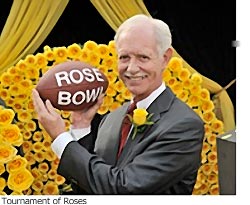 Saying farewell to a whole decade means a whole lotta revelry this New Year’s Eve. So if you plan on partying like it’s 2009, here’s a tip: leave your car at home.
Saying farewell to a whole decade means a whole lotta revelry this New Year’s Eve. So if you plan on partying like it’s 2009, here’s a tip: leave your car at home.
Going Metro is not only the safer and more environmentally-appealing way to go—it’s free during prime revelry hours and open all night. (Good news if your resolutions happen to include going green, being sociable and saving money in 2010.)
All Metro trains and buses, including the Orange Line busway in the San Fernando Valley, will be offering free rides from 9 p.m. Thursday till 2 a.m. Friday. The Orange Line, along with Metro’s Red, Purple, Blue, Green and Gold Line trains, will be running every 20 minutes from 9 p.m. to 5 a.m., with regular fares kicking in after 2 a.m.
Then, if you want to cheer on Sully (a.k.a. hero pilot Captain Chesley Sullenberger III) as he leads the 121st Rose Parade starting at 8 a.m., Metro’s Gold Line will be running extra trains into Pasadena on New Year’s Day. Later in the day, a train-shuttle combo will get you to the Rose Bowl, where the Ohio State Buckeyes are playing the Oregon Ducks starting at 2:10 p.m.
For a full rundown on the public transportation options as Los Angeles rings in 2010, check out Metro’s blog The Source or call 1-800-COMMUTE (266-6883).
Sheriff’s overtime practices criticized [updated]
December 20, 2009
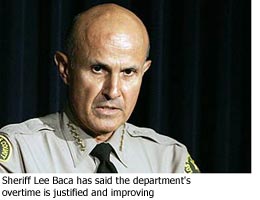 Los Angeles County auditors have found that hundreds of Sheriff’s Department employees are racking up such significant amounts of overtime that they may be undermining their job performance.
Los Angeles County auditors have found that hundreds of Sheriff’s Department employees are racking up such significant amounts of overtime that they may be undermining their job performance.
In a just-released report, the Auditor-Controller’s office said that 348 sheriff’s employees had worked the equivalent of an extra six months a year in overtime—substantially boosting their income while raising questions about internal controls and public safety.
“Employees who work significant amounts of overtime may not be physically/mentally capable of performing their jobs,” wrote Auditor-Controller Wendy L. Watanabe. “In addition, we noted that non-emergency overtime is not always pre-approved, and management does not always monitor individual overtime worked/reported for compliance with work schedule limitations.”
Among other things, auditors examined the top 20 overtime earners in the department, finding that the vast majority of them had violated rules prohibiting excessive double shifts or stringing together more than 12 consecutive days of work.
“Sheriff’s timekeeping staff are supposed to issue notices for work rule violations such as the ones we noted,” according to the audit report. “However, timekeepers did not identify 32 of the 44 violations noted in our testwork.”
Independently, Supervisor Zev Yaroslavsky’s office in recent months also examined the department’s top overtime earners because of the large sums being spent and concerns that deputies could be risking their effectiveness by working too many hours.
Yaroslavsky’s staff found that, in 2008, at least 10 deputies more than doubled their salaries with overtime. One deputy with a base pay of $105,561, for example, collected an additional $130,214 in overtime, bringing his annual pay to $235,775.
He was one of at least 15 deputies and sergeants who earned more than $200,000 because of overtime, according to county records.
The auditor’s overtime examination focused on the period between March 2007 and February 2008. It was undertaken as part of a broader effort by the Auditor-Controller to study payroll and personnel issues throughout the Los Angeles County bureaucracy.
As a result of its findings, the Auditor-Controller’s office called on the Sheriff’s Department to implement new overtime policies and tighter controls. Auditors began their latest report by noting that the Sheriff’s Department had exceeded its overtime budget by an average of 104% during the past five fiscal years—or an average of nearly $83 million annually.
Sheriff’s officials, responding to the findings, noted that overtime for fiscal year 2008-2009 was dramatically reduced as department vacancies were filled, meaning fewer overtime hours were needed to backfill by existing personnel.
In its response, which is attached to the audit, the department also said some of the officers cited for working multiple double shifts and excessive consecutive days were assigned to Special Enforcement Bureau, Narcotics and Homicide, where they “are sometimes required to respond to unplanned and/or critical events…While the units make every attempt to schedule their personnel in order to avoid such violations, in the interest of public safety, it is sometimes unavoidable.”
Besides the sheriff’s use of overtime, the Auditor-Controller also examined other financial issues within the department, including industrial accident payments, leave accounting, monitoring of bonus eligibility, processing employee terminations and data security. In these areas, too, auditors found problems.
For example, the auditors reviewed the cases of 25 employees who were on extended sick leave and found that eight, or 32%, were potentially “overpaid” $7,000 apiece because of a lack of rigorous oversight of documents that were being filed. Auditors found similar overpayments in a review of industrial accident cases.
[Updated 12/22]
The Board of Supervisors today unanimously approved a motion by Supervisors Zev Yaroslavsky and Gloria Molina that would bring more oversight and accountability to overtime usage in the Sheriff’s Department.
Among other things, the motion directs the Chief Executive Officer to report back to the board on January 19 with strategies for identifying and implementing new overtime policies and controls.
In one of the most significant reforms, the motion directs the CEO, with help from the Auditor-Controller, to monitor Sheriff’s employees whose overtime earnings exceed 50 percent of their regular salaries. The goal for such reviews is to identify the kind of work schedule violations that were uncovered by auditors and that raise questions about whether job performance is being risked by excessive overtime.
2009 Holiday Celebration
December 18, 2009
A holiday ritual for L.A. and the Hahns
Hundreds of thousands of people have attended Los Angeles County’s free Holiday Celebration over the past 50 years. But for only a select few has it been a command performance.
Just ask Janice and James Hahn.
The children of the late, legendary Supervisor Kenneth Hahn—who created the celebration—always knew what they’d be doing when December 24 rolled around…
[Read More]
————————————————————————————————————
An Insider’s guide to the Holiday Celebration
The Los Angeles County Holiday Celebration is:
a. A chance to get your “Glee” on in the midst of thousands of fellow Angelenos
b. An opportunity to park for free in what is ordinarily a pretty pricey downtown parking lot
c. The only known concert in the world to combine the musical stylings of the Hollywood Master Chorale, Klezmer Juice, the Valleyaires Barbershop Chorus and the Mariachi Divas…along with 41 other acts featuring a total of more than 1,000 performers
d. Your personal gift from the Board of Supervisors–and you don’t have to buy them a tie, fruitcake, or even a bottle of cologne in exchange…
[Read More]
An insider’s guide to the Holiday Celebration
December 18, 2009
The Los Angeles County Holiday Celebration is:
a. A chance to get your “Glee” on in the midst of thousands of fellow Angelenos
b. An opportunity to park for free in what is ordinarily a pretty pricey downtown parking lot
c. The only known concert in the world to combine the musical stylings of the Hollywood Master Chorale, Klezmer Juice, the Valleyaires Barbershop Chorus and the Mariachi Divas…along with 41 other acts featuring a total of more than 1,000 performers
d. Your personal gift from the Board of Supervisors–and you don’t have to buy them a tie, fruitcake, or even a bottle of cologne in exchange
You just know the answer has to be e) all of the above. But what you may not know is that this year’s concert (www.holidaycelebration.org) to be held at the Dorothy Chandler Pavilion on Dec. 24, is the 50th anniversary of the festivities started by the late great County Supervisor Kenneth Hahn. So if this is your first visit—or your fiftieth—here’s an insider’s guide to making the most of Los Angeles’ ultimate choir-palooza in its golden anniversary year. (Did we mention that it was free?)
If you go, get there early—or late
Between 8,000 and 10,000 people are expected to attend, so “get in line early,” advises stage manager Chris Christel, a 21-year veteran of the show. The doors open at 2, and the show runs from 3 p.m. to 9 p.m. So get there by 11 a.m. or noon.
A contrarian strategy is offered by Laura Zucker, executive producer of the show and also executive director of the county’s Arts Commission, which produces the Holiday Celebration. “Usually by 7 p.m., the line has dissipated,” she says. She also notes that while early arrivals will have to share the garage with theater-goers taking in the “Mary Poppins” matinee at the Ahmanson, there’s no evening performance—so all those parking spaces will be up for grabs, for free.
Huell Howser—host of KCET’s California’s Gold and known in Holiday Celebration lore for hosting the show by himself for six straight hours in 2001—nods to the after-dark experience. “There’s a whole atmosphere out there on the plaza,” he says. “There’s kind of an excitement about it.”
To pick the best time for your visit, here’s a downloadable program with estimated performance times. Just be warned that the schedule is a bit flexible and acts could start as much as 20 minutes early or late, Zucker says.
So you think you can harmonize
This year’s celebration theme is “It’s Your Turn,” which means that participatory entertainment is the order of the day. Much of the action is out on the plaza, where caroling (song sheets provided), holiday card stenciling, swing dancing lessons and even a Chinese Lion Dance are on tap to entertain the crowd. There also will be a social media station where people can videotape holiday greetings that will be streamed live on www.holidaycelebration.org and www.kcet.org. Here’s the full lineup for the pre-show show.
And once the actual celebration starts, those still waiting to get inside the Dorothy Chandler Pavilion can keep up with what’s on stage by watching the JumboTron that will be set up on the Music Center Plaza. (Yes, kind of like the Gustavo Dudamel inaugural concert at Disney Hall. Not a bad year for access to free music in Los Angeles, eh?)
Make your own favorite memory
With more than 1,000 performers and six hosts—Pat Boone, Tia Carrere, Suzanna Guzmán, James Kyson Lee, Sheryl Lee Ralph and Fred Willard—odds are good that you’ll head home with at least one indelible memory.
Former L.A. mayor and current Superior Court judge James Hahn, who first attended as the 9-year-old son of 2nd District Supervisor Hahn, still recalls some of those early concerts. “I remember the Little Angels choir from Figueroa Church of Christ,” he says.
Maybe your memorable moment will come toward the beginning of the show—say, with the South Pasadena Children’s Orchestra—or at the end, with Mariachi Sol y Reyna de Los Angeles. You’ll know when you hear it.
Veteran stage manager Christel knows fairly precisely when he’ll hear his—around 4:35 p.m. That’s when the ARC Handbell Choir takes the stage. The ensemble of developmentally disabled children and adults puts their all into renditions of holiday standards like “Silver Bells.” “They just seem to take such joy in their performance,” he says. “The ARC Handbell Choir is kind of a tear-jerker for me.”
Go ahead, stay home
Back in the day, James Hahn remembers getting a cool, before-its-time “surround sound” experience by leaving the show and heading home, where he’d listen on the radio and TV simultaneously. Now he could add his laptop to the mix.
So do what Angelenos have been doing since 1965 and watch it live on KCET. Or listen on KPFK 90.7 FM or check out the webcast at KCET.org—all while wrapping presents or sipping eggnog at home.
“It’s one of those traditions that a lot of people keep it on TV for six hours as kind of atmospheric background for the holiday,” Howser says.
A one-hour highlights video of the celebration is made each year and airs nationally on PBS the following year. So next December, you can relive it all again.
And if you can’t wait that long, there’s always TiVo. “As sick as it sounds,” says Christel, the show’s stage manager, “I’ll go back the next day when I’m recovering at home and watch it again.”
Read our featured holiday story, “A holiday ritual for L.A. and the Hahns“
A holiday ritual for L.A. and the Hahns
December 17, 2009
Hundreds of thousands of people have attended Los Angeles County’s free Holiday Celebration over the past 50 years. But for only a select few has it been a command performance.
Just ask Janice and James Hahn.
The children of the late, legendary Supervisor Kenneth Hahn—who created the celebration—always knew what they’d be doing when December 24 rolled around.
“We’d all go down to the Music Center,” says Janice, now 57 and a Los Angeles city councilwoman. “And—I confirmed this with my mother—I would get a new holiday dress every year for this occasion.”
Janice says her biggest memory was when her dad allowed her junior high glee club to perform one year. It was a tough gig to land. The 2nd District supervisor would turn impresario for those early concerts, acting as emcee, overseeing just about every aspect of the performances and serving as all-around gatekeeper. Hahn served as county supervisor from 1952 to 1992, and his musical micromanaging is now part of his considerable legend.
“My dad and his chief of staff were the talent scouts in those days,” Janice says. “They decided who sang and what they sang.”
Musical groups clamored to take the stage, especially when the program moved from the Sports Arena, where it began in 1959, to the Dorothy Chandler Pavilion in 1964. But in the early days, Supervisor Hahn needed to hustle to line up talent for what was then called “The Christmas Music Program.”
And he wasn’t above putting the squeeze on family.
“At first, they didn’t have enough participants so they brought in my uncle George, who was an organist. He loved playing the Sports Arena organ in the gaps” between acts, recalls James, who was 9 at the time of the first concert and went on to become mayor of Los Angeles from 2001-2005. “We actually needed him because otherwise we would have had dead air.”
These days, James, who was appointed to the bench last year by Gov. Arnold Schwarzenegger, is hearing cases involving foster children at the Edmund D. Edelman Children’s Court in Monterey Park. He describes it as “a court unlike any other court” and says the holiday season adds a certain poignancy to what are already difficult times for the children who appear before him.
And when James reflects on the Holiday Celebration started by his dad, it’s his own family recollections that resonate most.
“The memorable times for us were more family moments: When I brought my children down there for the first time, when my sister brought her children for the first time, and then her grandchildren.”
Even now, it’s a hard habit to shake.
“My mother and I, wherever we may be, make a point of tuning in to it, either on radio or public TV,” Janice says.
She thinks the concert has changed for the better over time. “It’s really so much more diverse now, and more inclusive of so many more expressions of holiday times.”
As for all the Twittering, Facebooking and YouTubing that will accompany this year’s festivities, well, let’s just say her father, who died in 1997, preferred to do things old-school.
“I think he probably would have said word of mouth was what carried that program year after year after year.”
It’s been a while since the younger Hahns came out for the free show. “I haven’t been there in a few years,” James Hahn says, “but this might be a good year to go back.”
As for Janice Hahn, she’ll be spending the holidays in Colorado with her grandchildren and will have to miss the celebration. But she’s glad it’s there. As an elected official, she knows how hard it is to keep such programs afloat in challenging economic times. This year, the supervisors had to come up with an extra $100,000 to keep the program, which has a total budget of $900,000, going at its current 6-hour running time. She thanks them for doing so, and for honoring the original vision behind the extravaganza.
“It’s still today part of what he wanted. My father came from a very poor family. He lived in poverty most of his life before he became an elected official. I think that he always felt that this magnificent public building, no matter what your status was, should be free to the public one day a year…He really believed in that one day a year: making people feel like they were special, with no cares in the world, to act like the wealthy–free parking, big luxurious chairs…listening to a glee club perform Jingle Bells.”
“Particularly in times like these, people really appreciate this gift.”

Supervisor Hahn, with one of many choirs, was legendary for micro-managing the selection of performers at the Holiday Celebration
Here’s an insider’s guide to making the most of Los Angeles’ ultimate choir-palooza in its golden anniversary year. (Did we mention that it was free?)
Answering the cry for help—now in Spanish
December 15, 2009
 Suicide is a universal problem—but when it comes to crisis help lines, suicide prevention is far from an international language.
Suicide is a universal problem—but when it comes to crisis help lines, suicide prevention is far from an international language.
That’s about to change as Didi Hirsch Mental Health Services, the Westside’s biggest mental health service provider, begins offering extensive Spanish-language coverage on its 24-hour crisis line this week.
“We know they are eager for help,” said Kita S. Curry, Didi Hirsch’s president and CEO. “Calls to our hotline more than double whenever La Opinion or various Spanish language radio and TV stations report on our services.”
Didi Hirsch will become one of only 11 centers in the U.S. offering 40 hours or more of Spanish language coverage each week, said Lidia S. Bernik, director of network development for the National Suicide Prevention Lifeline, an organization dedicated to maintaining high standards among members of its network.
The Board of Supervisors on Dec. 1 approved a change in the county’s contract with the center, allowing it to receive $802,733 in state Mental Health Services Act funds, with part of the money going toward establishing the Spanish-language lines. Already five bilingual crisis counselors have been hired and the organization is searching for a bilingual therapist. The center also is looking for volunteers to complete its intensive training program so they, too, can answer the hotline—a challenge for many bilingual working people who can’t easily miss job or family obligations to take part in the 60-hour course. (The next volunteer training sessions begin Jan. 23.)
“There are few events that are more shattering for a family than a suicide. The ability to prevent one affects many lives,” said Marvin Southard, the county’s director of mental health, explaining the importance of offering Spanish language crisis-line services. Southard said the benefits will ripple beyond Los Angeles because the organization serves as a backup for other suicide hotlines throughout California, picking up their calls when they are over-subscribed, he said.
While the center has had limited Spanish language coverage—and has access to a network of speakers of languages including Korean and Farsi as well as Spanish, German and French—the center will expand its reach dramatically starting on Wednesday. That’s when it will begin offering callers help in Spanish from 8:30 a.m. to 12:30 a.m. Once new hires are trained, the service will run round-the-clock. The number for the center’s crisis line is (877) 7-CRISIS, or (877) 727-4747.
The need for outreach and prevention is profound.
Although Latinos in general do not commit suicide at a rate greater than whites, Latino young people, especially teenage girls, are more likely than their peers in other ethnic groups to consider and attempt suicide.
A 2007 CDC survey of risky behavior among high school students found that 21.1% percent of Latinas reported they had seriously considered attempting suicide, compared to 18% of black females and 17.8% of whites. An earlier CDC report, “Suicide Among Hispanics,” said that suicide was the third-leading cause of death among Latinos ages 10-24.
“Hispanics in grades 9-12, particularly females, report more feelings of sadness or hopelessness and of suicidal ideation and attempt, compared with their white or black non-Hispanic counterparts,” the report said. “A comprehensive, strategic plan for suicide prevention should include multiple points for prevention, maximizing the likelihood of reaching persons in need.”
In all, 675 people committed suicide during 2007 in Los Angeles County. Most of them—58%–were non-Hispanic whites, while 22.5% were Latinos, followed by Asians, blacks, Native Americans and Pacific Islanders.
In addition to helping to establish Spanish crisis lines, the new mental health funds also will be used by Didi Hirsch to create support groups for Spanish-speaking survivors of suicide and to expand the organization’s outreach capacity to Latinos in both English and Spanish. A key target of that outreach will be focused on high schools, where Latino students are an important audience for suicide prevention messages, said Lyn Morris, Didi Hirsch’s division director of emergency services.
Along those lines, the county Department of Mental Health also is planning a targeted program aimed at suicide prevention among teenage Latinas, which is expected to come before the Board of Supervisors early next year.
Such multi-faceted efforts are crucial. Morris of the Didi Hirsch center said Latinos tend to rely on “internal support systems” such as friends and family and church, generally turning to outsiders only as a last resort.
“By the time they call us,” she said, “we find that they’re pretty desperate.”




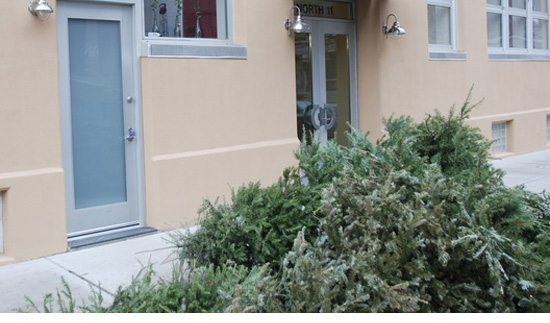
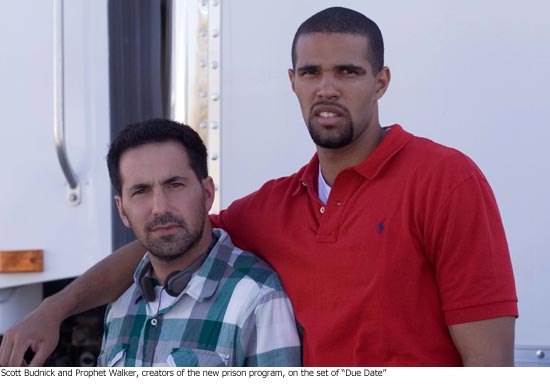
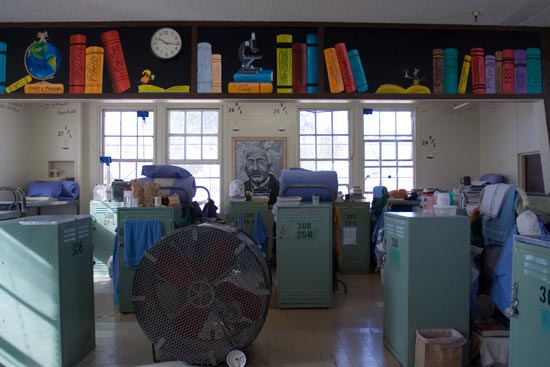
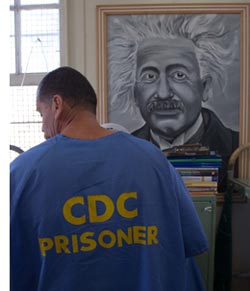
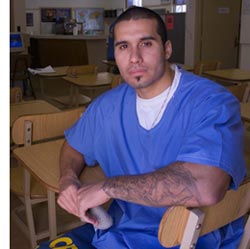
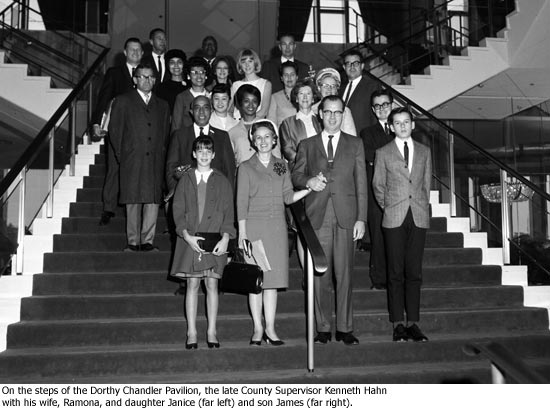
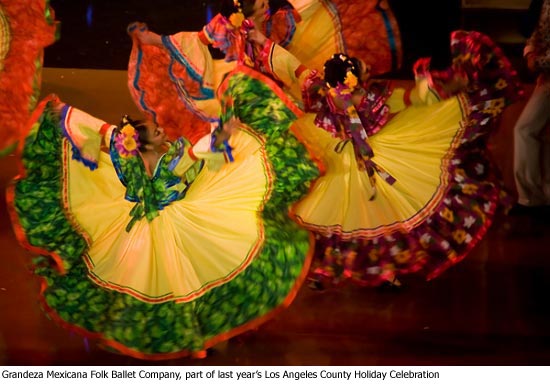






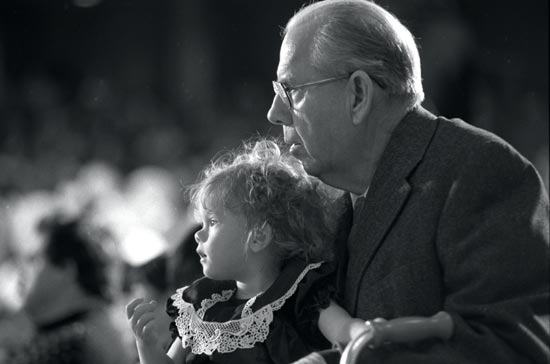






 Check for the latest closure information
Check for the latest closure information








